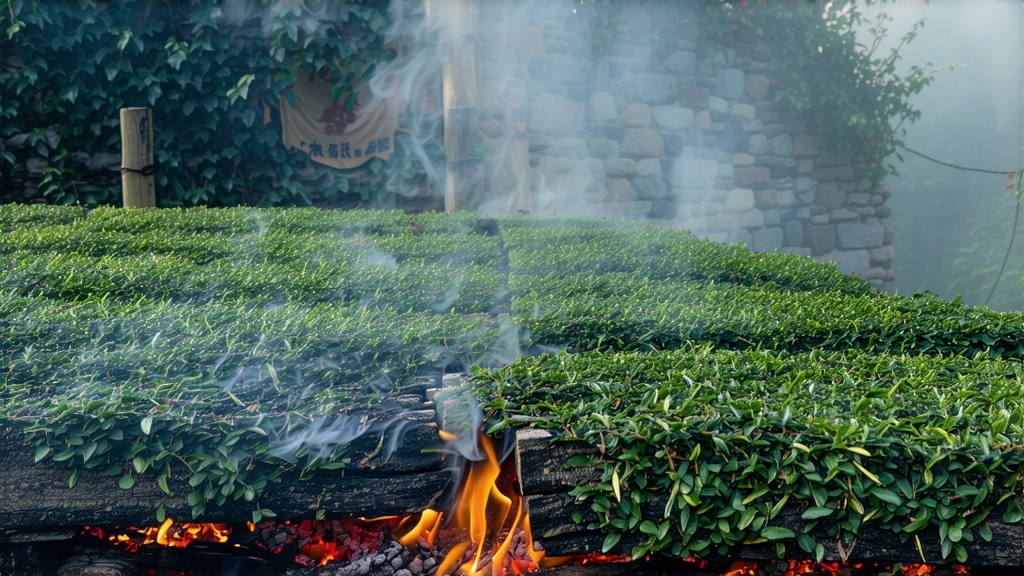
When European tea clippers first rounded the Cape of Good Hope in the late seventeenth century, the cargo that most excited London merchants was not silk or porcelain, but small, glossy, black-leafed chests from the Wuyi Mountains labeled “Bohea Souchong.” That tea—today known globally as Lapsang Souchong—was the first black tea ever seen in the West, and its arrival marked the birth of the entire black-tea tradition that now stretches from Assam to Ceylon to Kenya. Yet behind the familiar, smoky perfume that once filled Georgian coffee-houses lies a far more nuanced story of terroir, imperial trade, and artisanal craft that is still unfolding in the rocky gorges of northern Fujian Province.
Geographic Roots and Two Stylistic Paths
Lapsang Souchong is not a single tea but a family of teas whose ancestral home is the 1,500-meter-high Wuyi massif, a UNESCO World Heritage site whose cliffs are riddled with vertical crevices called “danyan.” The original cultivar, Xiao Zhong (literally “small cultivar”), grows slowly in mineral-rich, weathered igneous soil, developing small, thick leaves that can withstand the rigorous withering and smoking processes that follow. Within the village of Tongmu Guan, one finds two distinct stylistic lineages. The traditional “Smoke-dried” (zhengshan xiaozhong) is withered over towering pine-log fires, absorbing resinous volatiles that fuse with the leaf’s own caramelized sugars. The more recent “Unsmoked” (wuyan xiaozhong) relies solely on charcoal heat and ambient floral withering, yielding a malt-driven cup that lets the cultivar’s natural honeyed notes speak without the campfire cloak. Both styles share the same plucking standard—one tender bud plus the first two leaves—picked only between Qingming and Grain Rain when spring mountain mists moderate UV exposure and concentrate amino acids.
Crafting the Embers: From Leaf to Smoke
Harvest begins at dawn when leaf moisture is still above 75 %. The baskets are rushed to the qinglou, a three-story wooden structure whose middle floor is lined with bamboo mats and whose ground floor contains the smouldering pine pit. Here the leaves undergo an eight-hour “double-heat” withering: warm air rises through slatted floors, desiccating the surface while the pine smoke penetrates the mesophyll. Once the leaves become supple enough to twist without tearing, they are rolled in narrow bamboo drums for 45 minutes, rupturing cells and initiating enzymatic oxidation. The critical “songxing” (pine-smoke) phase follows: leaves are spread two centimeters deep on rattan trays suspended one meter above a fire of local Masson pine roots rich in α-pinene and longifolene. For the next six hours the tea master gauges temperature by pressing the back of his hand against the tray—too hot and the leaf sugars carbonize, too cool and the smoke merely perfumes the surface. Finally, the leaves are pan-fired at 90 °C to fix the smoky signature, then charcoal-baked for three consecutive nights to deepen the malt base. The entire cycle spans 36 hours, during which the leaf loses 80 % of its weight yet gains a shelf life measured in decades.
Chemical Poetry: What’s in the Aroma?
Gas-chromatography studies at the Fujian Agriculture and Forestry University reveal more than 60 aromatic compounds unique to Tongmu Lapsang. Guaiacol and 4-methylguaiacol deliver the signature “bacon” note, while furfuryl alcohol and maltol create a lingering dark-honey sweetness. Remarkably, the pine smoke also methylates the tea’s natural theaflavins, producing novel pigments that refract light like antique garnet—one reason why the liquor glows crimson even when diluted. These same compounds act as natural preservatives; vacuum-sealed cakes of 1998 Tongmu have been cupped in Berlin and found still vibrant, their smoke softened into sandalwood and dried longan.
Brewing the Cliff Smoke: Gongfu for the Western Palate
To unlock Lapsang’s stratified aromas without allowing the smoke to dominate, one must balance leaf quantity, water chemistry, and heat decay. Begin with 5 g of loose leaf—preferably the long, wiry “caihong” grade—in a